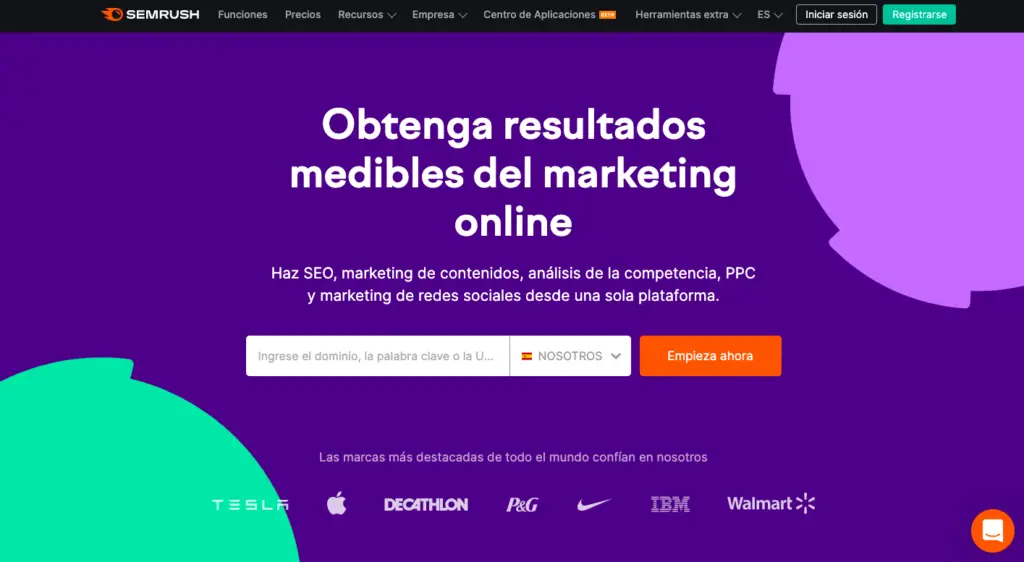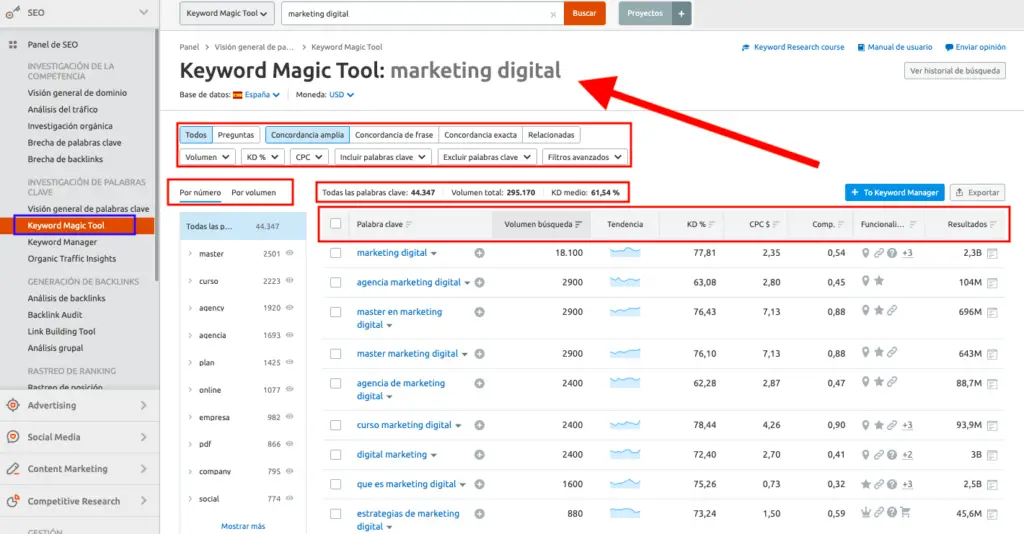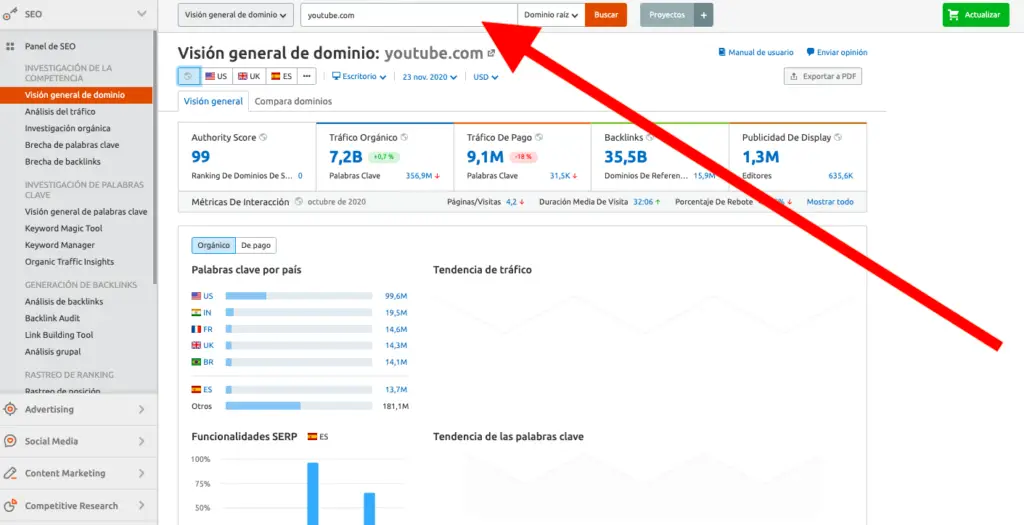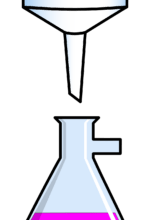How to improve SEO positioning: 7 tips

In this article you will learn how to improve SEO positioning of your website, your business, and some examples and tools to achieve it.
While the benefits of SEO are vast, the idea of putting SEO strategies into practice can be daunting.
Up to two-thirds of small business owners say their biggest challenge is finding new customers. However, only 17% of small businesses invest in SEO.
Why does this happen? ...
Some are intimidated by the work that SEO seems to require, while others simply have no idea where to start.
But here's the good news: SEO doesn't have to be scary. If you focus on the 7 simple tips below, you can start your SEO strategy today and start seeing great results in a matter of months.
But first, what exactly is SEO and why is it important? ...
Let's start!
What is SEO positioning?
SEO means search engine optimization. At the most basic level, SEO is a process by which you make sure that your business website can be found online. It is the practice of increasingle organic traffic your website by ranking higher on search engine results pages (SERP).

SEO is for everyone, not just big online businesses or tech companies. If you have a business with a web presence, it is firmly within your grasp to learn (and harness) the powers of SEO. From online marketplaces to moving companies, SEO can benefit any business.
You probably use Google dozens of times a day, so you know that being found through search engines is important for the long term success of your business ...
Why is SEO positioning important?
Studies show that the first result on search engine results pages receives 33% of all traffic for that search phrase. The second result only gets 18% of the traffic, and the percentages only go down from there, with less than 6% of the traffic reaching the second page.
But imagine how many new customers you could attract if you could rank in the top 5 on Google for some requests! Now think about what would happen if you finally ranked # 1! ...
You will see a huge increase in traffic, and the more traffic to your website, the more opportunities you have to convert visitors into paying customers. It sounds good for business.
How can I improve my SEO positioning?
You need to optimize your website for the search engines.
Search engines are essential. Bing, Google and other search engines rank web pages in Search Engine Results Pages (SERPs) based on what they judge to be the relevance and reputation of the page ...
For example, if someone searches for "the best camera to record videos Google will rank the most relevant results for that search term, from best to worst, as shown in the following image:
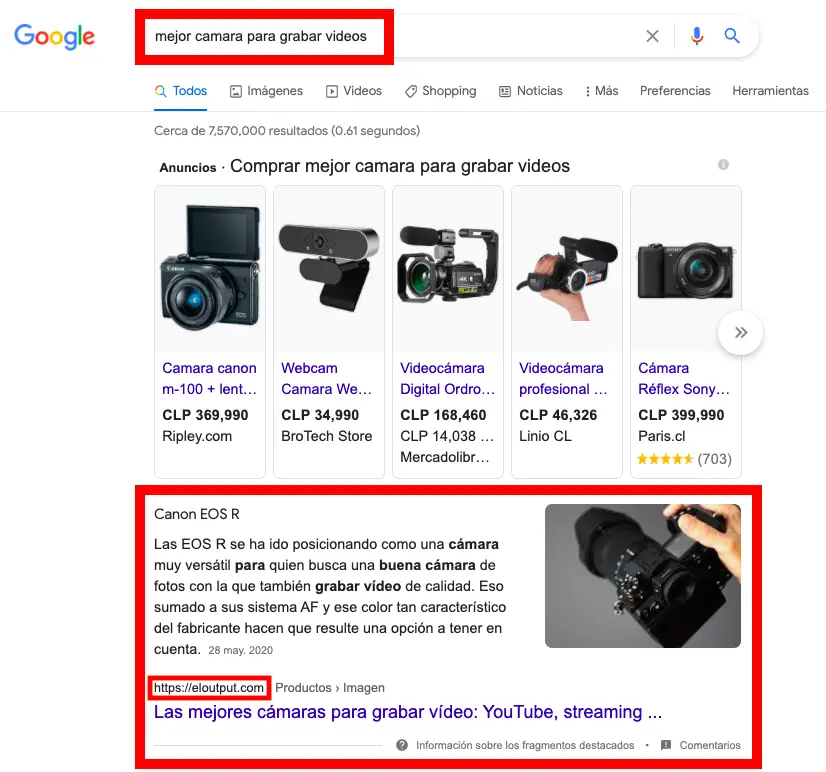
Dozens of factors influence how relevant search engines are to a website they think they have for certain search terms. The good news is that many of these factors are really under your control.
In fact, there are hundreds of SEO strategies. You don't have to be an expert to get started. Follow the simple tips listed below and you can jumpstart your SEO efforts and start seeing your site's ranking increase in no time.
1. Identify relevant and bulky keywords
Keywords or queries are the words people type into search engines. To help potential customers find your site, you need to know what keywords they are using. Fortunately, you can do this by performing a keyword research.
There are millions of potential keywords out there, so make sure you focus on identifying the keywords that are most relevant to your business. To begin with, put yourself in your customer's shoes.
- What they want?
- What types of questions would bring them to your business?
- What search terms do you want your website to rank for?
Think of it this way: if you have a shoe store in Bogota, you know you want to appear on the first page of search engine results when customers type "shoe store in Bogota" or "best shoe store." in Bogota ”in their research.
After brainstorming a list of relevant keywords, you need to choose the right keywords to focus your SEO efforts.
The best keywords are those with the highest search volume, that is, the keywords that have the highest number of people looking for them on a monthly basis, and which at the same time do not don't have as much competition.
What is the best tool to improve SEO positioning?
There are many SEO tools in Free online keyword research, as well as paid tools, which can help you find the search volume of a keyword while discovering related keywords.
Before you know it, you'll have a long list of keywords ready to help you improve your website's SEO.
One of the best tools for this task is SEMrush.
SEMrush is an excellent platform for digital marketing industry, especially for the referencing of your website. With it, you can perform many optimization and research tasks. One of them is keyword research.
Check out the following image showing the SEMrush tool Keyword magic in action :
In the image above, we used SEMRush to compare keywords, volume, and difficult keywords for the keyword 'digital marketing'.
In general, the higher the keyword volume, the higher the keyword difficulty (and the harder it is to rank high).
The real SEO magic comes when you can identify high volume queries, but low KD (Keyword Difficulty).
2. Prioritize the most important pages of your website
SEO can quickly become overwhelming if you don't prioritize your efforts.
Take a look at your current website and create a list of the pages most important to your business goals ...
For example, if you are selling a product, you should first optimize the product pages that directly generate sales. Your landing page Main also has a huge impact on user conversion, so make sure it's at the top of your list.
3. Optimize your existing content to improve your SEO positioning
As mentioned above, the pages that search engines deem "best" will rank highest on search engine results pages, and that's where you want to be.
The good news is that you can boost your SEO efforts by following a simple formula for your existing web pages. Optimize certain key elements of your web pages and you'll be significantly closer to ranking higher on search engine results pages.

Here are some places to focus your SEO efforts:
Keywords
Do keyword research as above and focus the existing content on the page around one or two specific keywords per page.
Page titles
Grab the reader's attention, include your target keyword, and keep your title under 60 characters.
Headers
Use your keyword in the H2 sections, which you can create by selecting "Section 2" when editing your page in your CMS (eg WordPress).
Body of text
Focus on creating long-form content and make sure you spread your keywords and their variations throughout your post. However, be careful where you put your keyword, you don't want your content to be obnoxious to read.
images
Add relevant and high quality images to your pages. Clearly label your images using alt text.
Description of the objective
A meta description is a simple way to explain your content to search engines. Make sure your keyword is included in the description.
4. Create quality content with your SEO positioning in mind
After optimizing your existing content, you need to make sure that any new content you create (whether it's new landing pages or blog posts) is also optimized for search engines.
Make sure the above SEO elements are included in your content, but don't forget the importance of creating really useful and high quality content ...
It builds your audience in the long run, and as readers engage and share your content, it will help you rank higher in search results.
High quality content that your readers and search engines will love has the following characteristics. The content is:
- Original.
- Convenient.
- Accurate.
- Concise.
- Attractive.
- Answer a reader's question.
- Solve the problem of a drive.
- Systematically published.
If your site is built on WordPress, I recommend that you install the plugin Yoast SEO. It will help you with all the mentioned tasks in an easy way.
Recommended reading: How to create a website in WordPress.
5. Prove your credibility by connecting to reputable sites
You can also optimize your blog posts and landing pages by including links to credible and relevant websites.
External links are useful to your readers, while showing search engines that you recognize quality content and want your website to be as valuable as possible to your visitors.
Linking to websites with a high DA (Domain Authority), Search Engine Ranking Score developed by SEMrush, is good SEO practice. You can query a site's DA using SEMrush.
Another great feature of SEMrush is the domain authority score (photo above). You can easily follow the DA of any site you visit.
6. Write guest posts for other blogs
When deciding on the relevance or quality of your website, search engines take into account the amount of backlinks including it has, that is to say the number of links that point to your website from other sites ...
This means that while it is important to include external links on your website, you should also make an effort to get other people to link to your site.
How to get backlinks to improve my SEO positioning?
The easiest method is to write guest posts for other websites (like this one) and include links in the copy of the post, a hyperlink that links to a blog post or a blog post. landing page on your website.
You just need to find the right places to share your knowledge. Here are some tips to get you started:
- Find and build a list of websites relevant to your industry.
- Reach out to these sites and tell them about your experience and what you can offer their site audience.
- Check that they allow you to include follow links in your blog post, instead of untracked links. Untracking links won't directly help improve your search rankings.
While it may take a while to find the right place to post a guest post, having an article that links to your site can really boost your SEO efforts.
Recommended reading: How to start a blog step by step.
7. Make your website mobile friendly
Finally, having a mobile-friendly site will do wonders for your SEO efforts. Search engines want to give their users the best experience and content on the Internet, and they take website browsing seriously.

If you don't do your best to give your users an amazing experience on desktops and mobile devices, you're less likely to appear at the top of search engine results pages.
If a large portion of your browsing sessions take place on mobile devices, investing in a responsive mobile site is great for SEO and making your products or services more appealing to website visitors.
Conclusion
While this can represent a lot of information, remember SEO is a marathon, not a sprint. You must therefore be patient to improve your SEO positioning.
Adopting strong SEO habits to begin with and gradually adding additional practices afterwards can provide you with a solid SEO foundation. In summary, remember these 7 tips to improve your SEO positioning:
- Identify and leverage relevant and important keywords.
- Prioritize the most important pages on your site.
- Optimize existing content.
- Create really cool content.
- Show your credibility by creating links to reputable sites.
- Write guest posts for other blogs that link to your site.
- It is compatible with mobile devices.
SEO doesn't have to be overwhelming. With a few tips, you can become an SEO master in no time and rank your website # 1!
Share your knowledge
Congratulations!
You have completed our guide on how to improve your SEO positioning. Hope this content helps you understand SEO better and rank in the search engines in the best possible way!
Do you think this content is useful? ...
So share it on your networks!
I also invite you to leave us your opinion in the comment box and tell us which strategies have given you the best results when improving your SEO positioning.
Read below: 8 types of digital marketing campaigns.

